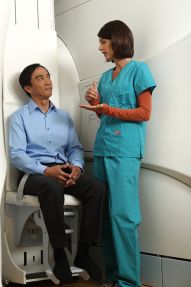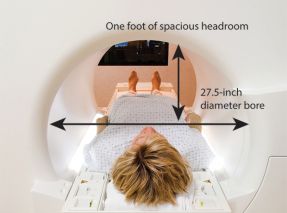
An MRI Helps Return This Pastor To His Pulpit
Posted In: MRI
It’s usually your doctor delivering the news: You need an MRI. Magnetic resonance imaging gives doctors a look at what’s going on inside your body and it helps them plan your treatment. Typically your physician will send you for a traditional MRI, but that might not be the best option for you. So how do you know which type of MRI to get?
Knowing you have a choice will save you time in the long run. Not everyone knows there are MRI options and not everyone needs an alternative. Douglas Boucher’s surgeon sent him for an MRI of a tendon in his right arm. He breezed through his exam. “It was relaxing,” Douglas recalls. “They took me right in. They have a selection of music with headphones. I just fell asleep.”
Not all patients are so relaxed they fall asleep. In fact, some get so anxious, they can’t even get started. If you’re worried about your exam, here are some questions to ask:
At RAYUS Radiology, these questions are answered in your screening phone call and help us determine which location is most convenient for you and which MRI is the best match for your specific needs.

Terry Trescott is a technologist who helps patients through High-field Open MRI exams. This particular open has close to the same tesla (magnetic) strength as a traditional MRI. Terry says she gets very positive feedback from radiologists and doctors about the quality of the High-field Open images.


Technically the Open Upright MRI has the lowest magnet strength of the alternatives, but the image quality is still good enough to help your doctor understand what’s going on inside of you. Technologist Leslie Young operates the Open Upright and says it’s not just the comfort, but the flexibility of the exam that makes it a good choice. “The upright MRI allows us to image the patient in the position in which they’re experiencing pain, whether that be upright, in a seated position or lying on their back.”


Wendell Anderson works on the High-field Wide-bore MRI and says speed is a common concern. “Many of our patients are a little bit claustrophobic and often they hear stories of being in the scanner for 45 minutes to an hour. This MRI scanner is a high-field strength scanner, so the images are high-quality images, very good resolution but it’s pretty fast as well. Most scans take about 20 to 30 minutes.”
The High-field Wide-bore MRI is considerably wider than a traditional MRI. Imagine the opening to be about the size of a hula hoop. The wider bore makes the exam a good option for claustrophobic, obese or broad-shouldered patients.